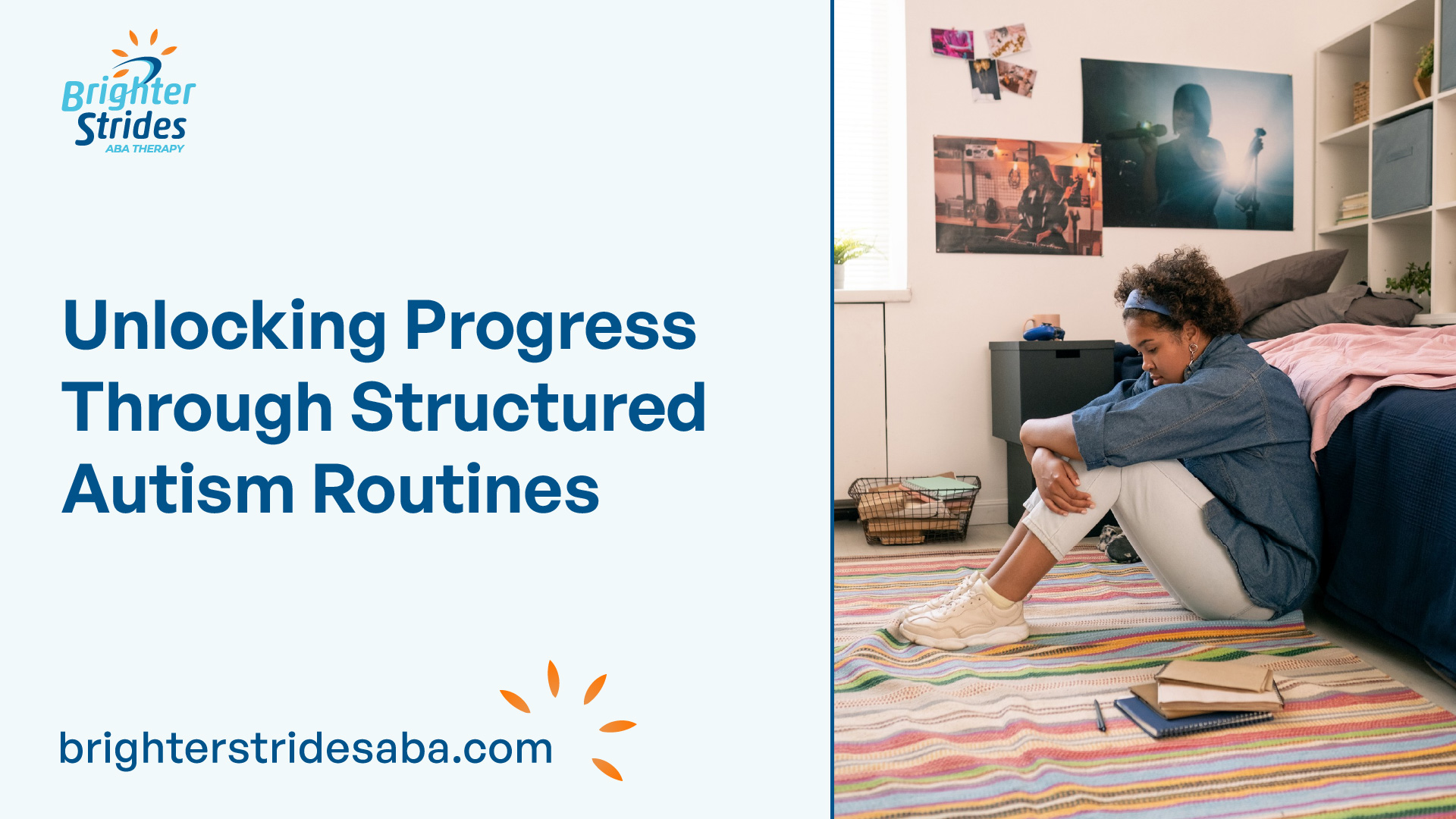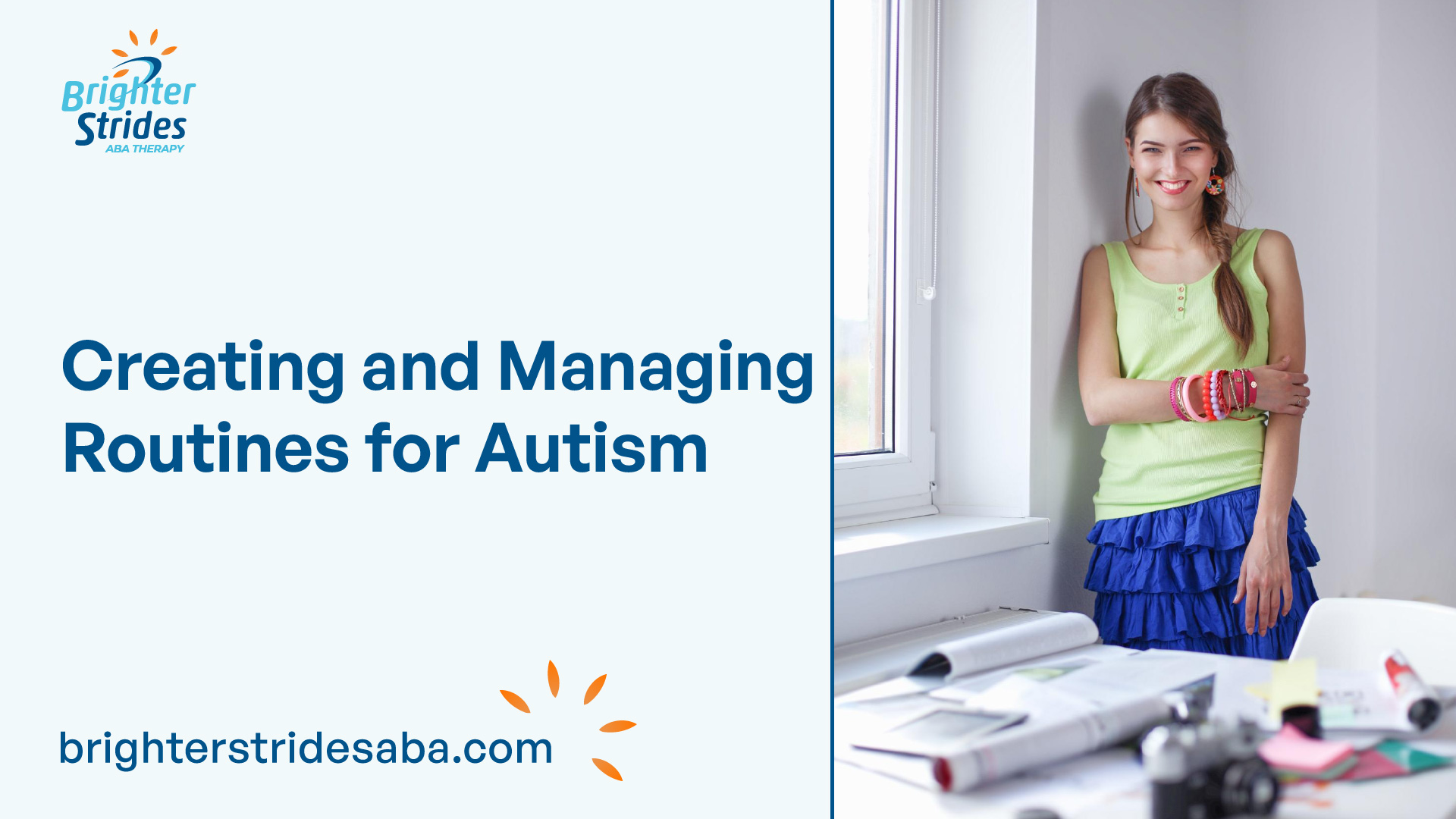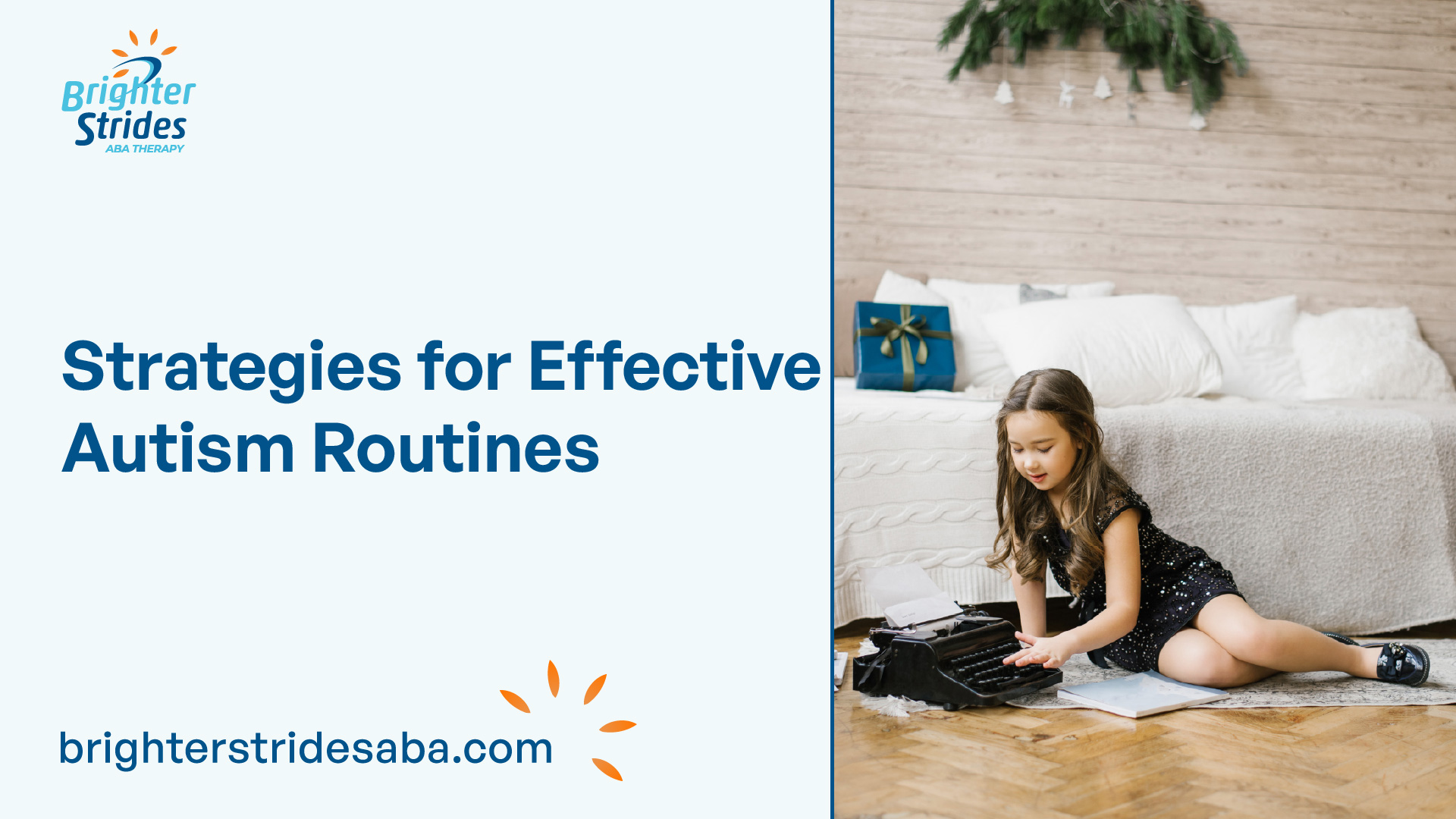
The Importance of Routines for Autism
Establishing and maintaining routines is of utmost importance for individuals with autism. Routines provide a sense of control, predictability, and structure, which are essential for navigating the world and reducing anxiety and stress levels [1]. Let’s explore the benefits of routines for individuals with autism and how they contribute to building important life skills.
Benefits of Routines for Individuals with Autism
Routines offer numerous benefits that greatly impact the well-being of individuals with autism. Here are some key advantages:
- Reduced Anxiety and Stress: Predictable schedules and routines help individuals with autism prepare for transitions or changes in activities, making them more adaptable to new situations. By providing a sense of control and familiarity, routines can alleviate anxiety and stress levels, promoting a sense of security.
- Enhanced Life Skills: Establishing routines helps individuals with autism develop important life skills such as time management, organization, and independence in completing tasks. Through consistent repetition and practice, individuals can improve their abilities to follow a sequence of steps, manage their time effectively, and accomplish daily tasks more independently.
- Reduced Challenging Behaviors: Routines can contribute to reducing challenging behaviors in individuals with autism. By providing a structured environment and clear expectations, routines promote a more positive and calm atmosphere, reducing the likelihood of disruptive behaviors. The predictability of routines helps individuals understand what is expected of them and minimizes uncertainty.
Building Life Skills Through Routines
Routines play a vital role in the development of essential life skills for individuals with autism. By following structured routines, individuals have the opportunity to learn and practice various skills, fostering independence and self-confidence.
For instance, a morning routine can include steps like waking up, getting dressed, brushing teeth, and having breakfast. By consistently following this routine, individuals with autism learn concepts of time, sequence, and personal care. Over time, they become more proficient in completing these tasks independently.
Similarly, a homework routine can involve setting aside a specific time and place for studying, organizing materials, and breaking down tasks into manageable chunks. Through this routine, individuals with autism develop time management skills, focus, and the ability to follow instructions.
By incorporating routines into various aspects of daily life, individuals with autism can gain valuable skills that contribute to their overall growth and independence.
In summary, routines provide individuals with autism a sense of control, reduce anxiety and stress levels, and foster the development of important life skills. By establishing consistent routines, caregivers and educators can create an environment that promotes well-being, independence, and positive behavior.

Creating and Managing Routines for Autism
Establishing and managing routines is essential for individuals with autism. Routines provide a sense of control, predictability, and structure, which can greatly benefit their daily lives. In this section, we will explore two key aspects of creating and managing routines for individuals with autism: establishing predictable schedules and supporting transitions and changes.
Establishing Predictable Schedules
Predictable schedules are a cornerstone of autism routines. They offer a clear framework for individuals with autism to navigate their daily activities. Having a consistent schedule enables them to anticipate and prepare for transitions or changes in activities, making them more adaptable to new situations.
When creating a predictable schedule, it’s essential to consider the individual’s preferences, abilities, and developmental stage. The schedule should be structured with regular times for meals, school or work, therapy sessions, leisure activities, and bedtime. Using visual supports, such as visual schedules or calendars, can enhance understanding and help individuals with autism grasp the concept of time and the sequence of events.
By establishing a predictable schedule, individuals with autism can experience reduced anxiety and stress levels, leading to a more positive and calm environment. Moreover, a consistent routine helps children with autism build important life skills such as time management, organization, and independence in completing tasks.
Supporting Transitions and Changes
Transitions and changes can be challenging for individuals with autism. Disruptions to their routines may lead to heightened anxiety levels, meltdowns, or difficulties in adapting to new circumstances. Therefore, supporting transitions and changes is crucial in helping individuals with autism navigate these situations with greater ease.
To support transitions, it’s beneficial to use visual supports, such as visual schedules, timers, or countdowns. These tools provide a visual representation of the upcoming change or transition, helping individuals with autism understand and prepare for what is coming next. Offering clear verbal cues, using social stories, or providing a transition object can also assist in easing the transition process.
When changes to routines are necessary, it’s important to communicate them in advance and explain the reasons behind the change. Providing visual or written information about the change can aid in understanding and reduce anxiety. Gradual changes and the introduction of new activities or environments should be accompanied by clear explanations and gradual adjustments to the routine.
By supporting transitions and changes within the routine, individuals with autism can develop flexibility, adaptability, and resilience. This, in turn, can enhance their overall quality of life and promote a sense of security and comfort. It’s important to strike a balance between predictability and flexibility to ensure the well-being and successful navigation of daily life for individuals with autism.

Strategies for Effective Autism Routines
Implementing effective strategies is crucial when developing and maintaining routines for individuals with autism. These strategies can help create structure, increase predictability, and promote independence. Two key strategies for successful autism routines are visual supports and involving individuals in routine planning.
Visual Supports and Timers
Visual supports such as schedules and timers play a vital role in supporting individuals with autism in understanding and following routines. These visual aids provide a clear and visual representation of the sequence of activities, helping individuals with autism anticipate and prepare for transitions or changes in routine.
Visual schedules offer a visual timeline of the day’s activities, allowing individuals with autism to have a clear understanding of what to expect and when. By using pictures, symbols, or written words, visual schedules provide a visual cue for each step of the routine. This helps reduce anxiety and increases predictability, enabling smoother transitions between activities.
Timers can also be effective visual supports for individuals with autism. They provide a visual representation of the duration of each activity, helping individuals manage their time effectively and stay on task. Timers can be set to indicate the duration of an activity or the time remaining for a task, helping individuals stay organized and focused.
Involving Individuals in Routine Planning
Involving individuals with autism in the planning and creation of routines can be highly beneficial. By actively participating in routine planning, individuals with autism can have a sense of ownership and better understand the purpose and structure of the routines. This involvement empowers them, increases their sense of control, and promotes independence in managing their daily activities.
When individuals with autism are involved in routine planning, it allows for customization and tailoring of routines to their specific needs and preferences. This personalized approach enhances engagement, motivation, and overall compliance with the established routines. It also helps individuals feel more invested in the routines, leading to a greater sense of ownership and responsibility.
By involving individuals with autism in routine planning, it is possible to better address their unique strengths, challenges, and interests. This collaborative approach ensures that the routines are meaningful, relevant, and supportive of their individual needs. It also fosters a sense of autonomy and self-confidence in managing their daily activities.
By incorporating visual supports and involving individuals in routine planning, effective autism routines can be established. These strategies create a structured and predictable environment, promoting independence, reducing anxiety, and enhancing overall well-being for individuals with autism.
Consistency and Flexibility in Autism Routines
Consistency plays a vital role in supporting individuals with autism. Establishing and maintaining consistent routines provides structure and predictability, which can help reduce anxiety and enhance feelings of safety and control in their daily lives. Consistent routines and environments also support the development of important life skills and promote independence for individuals with autism.
The Role of Consistency in Supporting Individuals with Autism
Consistency is crucial for individuals with autism as it creates predictability in their environment, making them feel safer. Many individuals with autism exhibit rigid patterns of thinking, which can lead to challenges in adaptive functioning, daily living skills, communication, and social interactions. However, the tendency to follow rules and routines can also be beneficial when structured environments are provided. Consistent application of rules and routines leads to increased engagement in activities and facilitates student learning.
Consistent routines help build familiarity, reduce anxiety, and improve overall well-being by providing a stable framework for daily activities and transitions. They allow individuals with autism to anticipate what comes next, which can alleviate stress and enhance their ability to navigate through their day.
Striking a Balance Between Predictability and Flexibility
While routines are essential for individuals with autism, it’s also important to strike a balance between maintaining predictability and teaching flexibility. As children with autism grow and develop, they need opportunities to learn how to adapt to new situations and cope with unexpected changes. Striving for flexibility within routines can help individuals with autism develop adaptive skills and increase their ability to handle changes in their environment.
Caregivers and educators can support the development of flexibility by gradually introducing small changes to routines, providing clear explanations, and using visual supports to aid understanding and acclimation to new routines [7]. By gradually introducing flexibility, individuals with autism can learn that changes in routines can be manageable and even positive.
During disruptions, events, or uncertainty, sticking to routines can be highly comforting for individuals with autism. Routines provide structure and predictability in their lives, making them feel more secure. However, it is important for caregivers and educators to communicate openly with individuals with autism about changes in routines, providing clear explanations and visual supports to aid in understanding and acclimation to new circumstances. This approach can help individuals with autism navigate disruptions more smoothly and adjust to new situations with increased ease.
Managing Disruptions to Autism Routines
For individuals with autism, disruptions to routines can have a significant impact on their well-being and daily functioning. Understanding the effects of changes in routines and providing support during uncertain times is crucial for helping individuals with autism navigate these challenges effectively.
Understanding the Impact of Changes in Routines
Disruptions to routine can be highly distressing for individuals with autism, particularly children. Abrupt changes or frequent disruptions can lead to behavioral challenges such as meltdowns, aggression, or withdrawal. Autistic individuals often rely on routines to provide structure, predictability, and a sense of control in their lives. Sudden changes can be overwhelming and cause distress, as they disrupt the expected order of events and the familiar patterns that individuals with autism find comfort in.
During disruptions, events, or uncertainty, sticking to routines can be highly comforting for individuals with autism. Routines provide structure and predictability, making them feel more secure. By understanding the impact of changes in routines, caregivers and educators can take proactive steps to minimize distress and support individuals with autism in managing disruptions effectively.
Supporting Individuals During Uncertain Times
During uncertain times, such as the COVID-19 pandemic, it is essential to provide additional support to individuals with autism. While routines may need to be modified to adapt to the circumstances, maintaining certain elements of regular routines can help alleviate stress and provide a sense of normalcy. This can be achieved by incorporating familiar activities or maintaining consistent schedules to the best extent possible.
Visual schedules, timers, and social stories are effective tools for supporting individuals with autism in understanding and coping with changes in routines during uncertain times. Visual schedules provide a visual representation of the new routine, offering predictability and helping individuals anticipate what will happen next. Timers can be used to provide clear time markers and facilitate transitions between activities. Social stories can be used to explain why routines are changing and what to expect, reducing anxiety associated with disruptions.
By providing support, maintaining elements of regular routines, and utilizing visual supports during uncertain times, caregivers and educators can help individuals with autism navigate disruptions more effectively. These strategies offer predictability, reduce anxiety, and support individuals in adapting to changes while maintaining a sense of security and stability.
References
- https://www.tpathways.org/blog/why-children-with-autism-need-routines/
- https://www.autismspecialtygroup.com/blog/importance-of-consistency-in-autism
- https://www.autism.org.uk/advice-and-guidance/topics/behaviour/dealing-with-change/all-audiences
- https://special-learning.com/negative-response-to-a-disruption-of-routine/
- https://www.unl.edu/asdnetwork/virtual-strategies/rules-and-routines
- https://raisingchildren.net.au/autism/behaviour/understanding-behaviour/changing-routines-asd
- https://afirm.fpg.unc.edu/sites/afirm.fpg.unc.edu/files/covid-resources/Supporting%20Individuals%20with%20Autism%20through%20Uncertian%20Times%20Article%20Only.pdf

 We've just released an article! Check out our blog!
We've just released an article! Check out our blog! 


